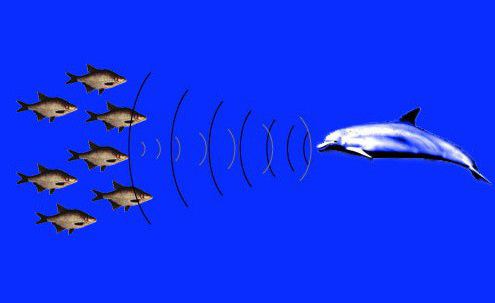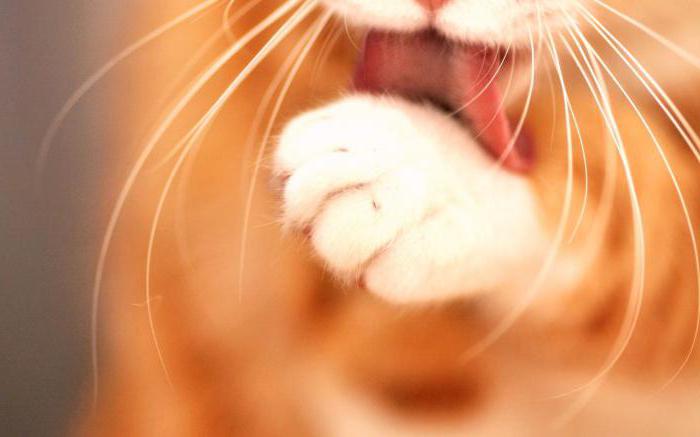A famous proverb says that a cat mustache is given for beauty. Is it really? Long, coarse hair is far from aesthetics. They have tactile sensitivity and are receptors transformed during evolution. In the scientific community, they are called vibrissa. The word comes from the Latin "vibro", which means "hesitate", "wriggle." Let's talk in more detail about what are vibrissae? What are they needed for?
Vibrissa or mustache
Vibrissas are mechanosensitive coarse hair characteristic of many mammals. They are always noticeable and stand out above the surface of the coat. As a rule, they are located in groups on the head of the animal: near the nose, eyes, on the lower and upper jaw. There are vibrissae on other parts of the body. For example, marsupials have them on their feet. Their sizes may vary. So for domestic cats, a length of 6-7 cm is characteristic.
Vibrissae are a specialized sensory organ. The base of each hair is immersed in a hair bag surrounded by venous cavities. Each of them has hundreds of nerve endings. The hair is allocated a separate area in the brain. Those located on the head are innervated by the trigeminal nerve.
Vibrissas are not eternal and over time they are worn out and then replaced with new ones. The process takes place imperceptibly and in stages. Therefore, the animal does not remain completely disarmed.
Differences of vibrissa from hair
In search of an answer to the question of what are vibrissae, many researchers wonder if they are hair. There are a number of differences between these two entities. Vibrissas, unlike hair, move with the help of striated muscles, rather than smooth ones. Their connective tissue capsule is more developed. They do not have sweat glands, and sebaceous are underdeveloped. They lack a core layer, and they are not affected by common molting. In the end, they perform a completely different function in the life of animals. Indirect evidence that vibrissae and hair are not the same thing can be provided by the accelerated development of the innervation of the former in ontogenesis.
In the photo you see a kitten in the womb. Vibrissae develop on the body of the embryo earlier than hair. This is one of the evidence of their earlier evolutionary history.
Variety of vibrissa
Before finding out why vibrissae are necessary for animals, we will find out some features concerning them. As mentioned above, they move with the help of striated muscles.
Vibrissas are divided into active (driven by willpower, or involuntarily) and passive (motionless). So, in anthropoid apes they do not have their own muscles. The movement is carried out due to facial muscles. In horses and pigs, the vibrissae are motionless.
These formations can persist even in the absence of hairline, as, for example, in representatives of the detachment of sirens. In whale whales, numerous vibrissae are present precisely as specialized organs, and not as vestigial residues. In most dolphins in adulthood, only pits from an undeveloped mustache remain on the muzzle. Juvenile vibrissa are transformed into specialized tactile organs that respond to low-frequency vibrations and water pressure.
Vibrissa evolution
Analysis of the structure of the bones of the skull of ancient beast-like reptiles allowed scientists to conclude what vibrissa is. They believe that this is an older formation than simple hair. Probably, the hair capsules of vibrissa evolved from the lateral line organs of aquatic amphibians and fish. They began to perform a similar function, but only on land, and not in water.
A similar role is played by vibrissa convergent organs such as antennae in arthropods, pedipalps in arachnids, and rigid feathery feathers in birds.
Vibrissa function in mammals
Vibrissae in mammals perform a tactile function. This is the main difference from hairs that are designed for thermal insulation. Sensitive vibrissae pick up air currents reflected from nearby objects. This allows the animal, regardless of visual acuity, to avoid obstacles, determine the location of objects and move quietly even in complete darkness. It is enough to recall domestic and wild cats that silently overcome obstacles at night. Nerve impulses from vibrissae enter the brain, which summarizes all the signals and on their basis creates a reliable and complete three-dimensional picture of the world. This is the function of vibrissae in the life of mammals.
Dolphin Vibrissa
Did you know that dolphins, like slopes, can sense electric fields. They feel them with the roots of undeveloped vibrissae. The function is open relatively recently. This is stated in an article in Proceedings of the Royal Society B.
The ability to sense the presence of electric fields is possessed by many fish and amphibians. Special organs arose from the lateral line. To date, among mammals, this ability has been found only in echidna and platypus. To determine the electric field, they use altered skin glands innervated by the trigeminal nerve.

Mammalian electroreception was first discovered by Professor W. Hanke and his team. As it turned out, the necessary organ for this arose as a result of the transformation of vibrissae. The pits of Guyana dolphins, in which an undeveloped mustache are located, are not useless. In the process of evolution, vibrissae have changed the way objects are recognized. They lost the ability to identify mechanical effects, but gained sensitivity to electric fields. They use this physiological feature to search for food in the bottom layers. The water in the habitats of the Guyana dolphins is cloudy and it is almost impossible to detect prey only with the help of vision. That is why they developed a “sixth sense”. After all, all living things are sources of weak electric fields.
Cat mustache: interesting facts

- The secret of silent movement of cats in the darkness of the night is not sharp vision, but sensitive vibrissae, which allow you to establish the location of all objects and obstacles in the dark.
- Vibrisses in cats are located throughout the body. The most expressive, of course, can be found on the face. However, if you take a closer look, you will find vibrissae on the ankles, legs, tail. They help the cat during the hunt.
- Quite often you can see how the cat directs its vibrissa forward. What does the position of sensitive hairs mean? Firstly, curiosity. The animal explores everything new in this way. Secondly, friendliness. If vibrissae, on the contrary, are pressed to the muzzle - this indicates anxiety, aggressiveness and concern.
- Vibrissa is a kind of weather station. Pay attention to the cat the moment before the jump. She will certainly move her mustache to adjust the position of the body and the strength of the shock, taking into account the speed of the wind and its direction.
Vibrisses in humans
What is vibrissa in mammals is understandable. But why are they absent in humans and at the same time many primates have? Scientists have compared the genomes of chimpanzees and humans, and this has revealed a number of genetic features. It was they who deprived humans of some of the anatomical features common among mammals, including vibrissae, and also led to an increase in brain volume.
As it turned out, people from monkeys are mainly distinguished by lost DNA fragments, the so-called deletions, and not genetic acquisitions. In the human genome there were 510 such changes - these are empty spaces that are filled in almost all other animals. Among them, a fragment of the genome associated with the production of a special protein receptor (androgen receptor) that responds to male hormones. With a high degree of probability, it can be associated with secondary sexual characteristics. Scientists have suggested that the loss of this genetic fragment has led to the fact that two features common to many mammals, including chimpanzees, are vibrissa hairs and keratin spines on the penis.